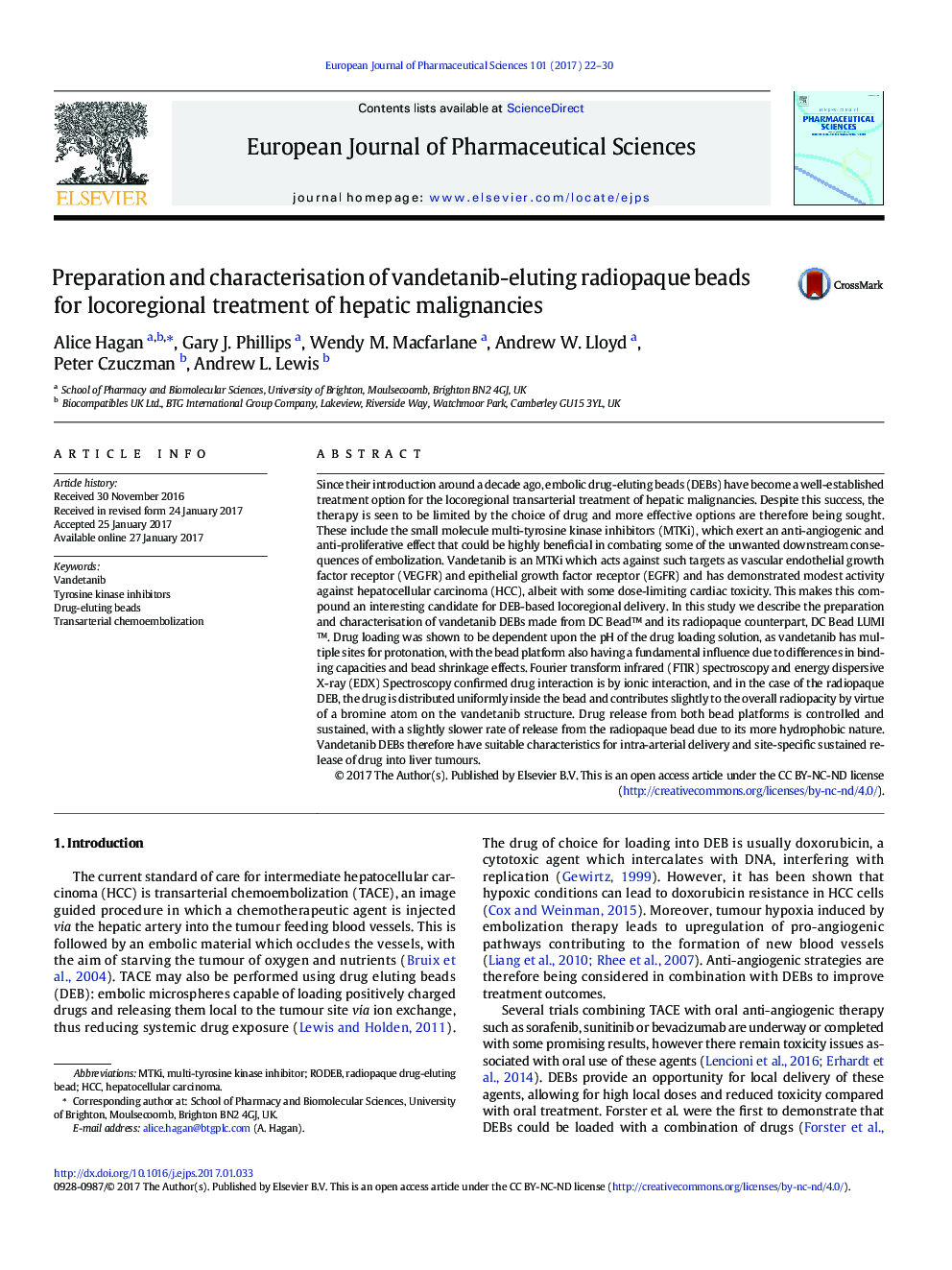| کد مقاله | کد نشریه | سال انتشار | مقاله انگلیسی | نسخه تمام متن |
|---|---|---|---|---|
| 5547655 | 1556149 | 2017 | 9 صفحه PDF | دانلود رایگان |

Since their introduction around a decade ago, embolic drug-eluting beads (DEBs) have become a well-established treatment option for the locoregional transarterial treatment of hepatic malignancies. Despite this success, the therapy is seen to be limited by the choice of drug and more effective options are therefore being sought. These include the small molecule multi-tyrosine kinase inhibitors (MTKi), which exert an anti-angiogenic and anti-proliferative effect that could be highly beneficial in combating some of the unwanted downstream consequences of embolization. Vandetanib is an MTKi which acts against such targets as vascular endothelial growth factor receptor (VEGFR) and epithelial growth factor receptor (EGFR) and has demonstrated modest activity against hepatocellular carcinoma (HCC), albeit with some dose-limiting cardiac toxicity. This makes this compound an interesting candidate for DEB-based locoregional delivery. In this study we describe the preparation and characterisation of vandetanib DEBs made from DC Bead⢠and its radiopaque counterpart, DC Bead LUMIâ¢. Drug loading was shown to be dependent upon the pH of the drug loading solution, as vandetanib has multiple sites for protonation, with the bead platform also having a fundamental influence due to differences in binding capacities and bead shrinkage effects. Fourier transform infrared (FTIR) spectroscopy and energy dispersive X-ray (EDX) Spectroscopy confirmed drug interaction is by ionic interaction, and in the case of the radiopaque DEB, the drug is distributed uniformly inside the bead and contributes slightly to the overall radiopacity by virtue of a bromine atom on the vandetanib structure. Drug release from both bead platforms is controlled and sustained, with a slightly slower rate of release from the radiopaque bead due to its more hydrophobic nature. Vandetanib DEBs therefore have suitable characteristics for intra-arterial delivery and site-specific sustained release of drug into liver tumours.
139
Journal: European Journal of Pharmaceutical Sciences - Volume 101, 1 April 2017, Pages 22-30